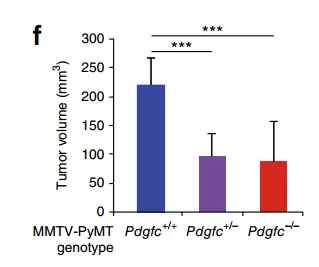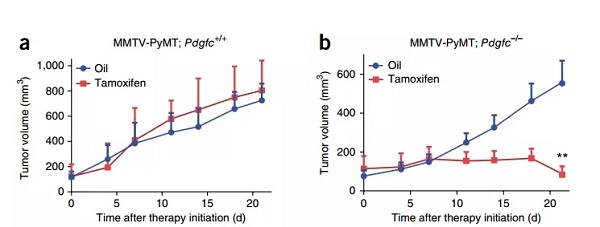Recently, Nature’s publication, Nature Medicine, published a fascinating study – a group of scientists from Sweden opened their minds and, through a simple method, actually put a class of drugs that could have been Treating breast cancer has become another breast cancer that is easy to treat. This feasibility has been fully verified in mouse experiments.

â–² Professor Kristian Pietras, the author of this study, gave his brain a hole... (Source: Lund University)
We know that breast cancer is a complex type of disease with multiple causes behind it. Approximately 70% of breast cancers express hormone receptors (such as ER and / or PR). In response to these breast cancers, a variety of drugs that have been approved for marketing can be treated, and the prognosis of patients is also well protected. In contrast, about 10%-15% of patients are not so lucky. Their type of breast cancer is called "basal cell-like breast cancer" and does not express hormone receptors, so many existing therapies have poor therapeutic effects. It is conceivable that such breast cancer is highly recurrent and the overall survival of the patient is extremely pessimistic.
As an expert in the field of cancer, the author of the study, Professor Kristian Pietras, works with the team to bring the gospel to these breast cancer patients. Many previous studies have found that there is often a high level of PDGF-CC in basal cell-like breast cancer. Is there a correlation between the two? To answer this question, the researchers used genetic modification to inactivate the gene encoding PDGF-CC in mice. The results of the subsequent experiments surprised them - the size of the tumors in these mutant mice has shrunk by half!

â–² Even if it is just a hybrid, it is enough to make the tumor size cut in half! (Source: "Nature Medicine")
This is not the most surprising. In the samples of these mutant mice, people have actually observed high expression of estrogen receptor (ER)! As mentioned above, a major feature of refractory basal cell-like breast cancer is that it does not express hormone receptors. Is it possible to knock out the expression of PDGF-CC and actually give breast cancer a "stealing the column" and change the type of them?
It may be unbelievable to say it, but it is really the result of the experiments observed by the researchers. In this experiment, they transplanted tumors with PDGF-CC and tumors lacking PDGF-CC in mice. Subsequently, these mice received treatment with the classic breast cancer drug tamoxifen. In vivo, tamoxifen's active metabolites effectively bind to the estrogen receptor (ER), thereby controlling the condition of ER-positive breast cancer.

â–² Lack of PDGF-CC, it is really good to cure refractory breast cancer (red line on the right) (Source: "Nature Medicine")
As the researchers expected, tamoxifen had no therapeutic effect on tumors with PDGF-CC. Once the tumor lacks PDGF-CC, tamoxifen shows a clear effect, and the tumor volume is reduced to one-seventh of the former! The use of antibodies to target PDGF-CC can also achieve similarly significant effects.
Later, the researchers also clarified the mechanism behind this discovery. It turns out that PDGF-CC can activate the expression of multiple genes in cancer-associated fibroblasts (CAF), and these genes will produce malignant cells that do not express receptors such as ER, making cancer refractory. This finding, along with experimental results in mice, suggests that targeting PDGF-CC may be a promising breast cancer treatment.

â–²The mechanism diagram of the study (Source: "Nature Medicine")
“We have brought a new therapeutic strategy that turns invasive refractory breast cancer into breast cancer that is sensitive to hormone therapy,†concludes Professor Pietras. “These findings help develop breast cancer. Effective therapy. (Source: Sina Pharmaceutical Network)
Teeth Whitening Machine,Desktop Model Tooth Light,Teeth Bleaching Machine ,Dental Teeth Whitening Machine
Foshan Ja Suo Medical Device Co., LTD , https://www.jasuodental.com